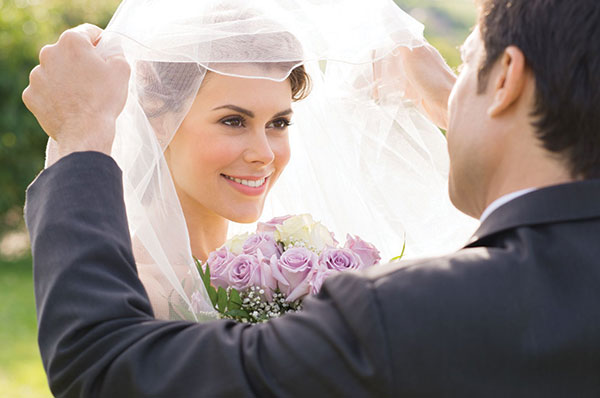How to Keep “Achoos” From Interrupting Your “I Do’s”
10 Tips for Planning an Allergy-Free, Asthma-Free Wedding
You want your wedding day to be memorable for all the right reasons. While selecting the color scheme and writing your vows, don’t forget another important consideration: allergies. The last thing you want is a series of “achoos” to interrupt your “I do’s,” or worse, send someone to the hospital. With these 10 tips from the American College of Allergy, Asthma and Immunology, you can limit allergy and asthma concerns on your big day.
1 The sweet smell of love is enough, so go easy on the perfume.
Some guests may be sensitive to cologne or perfume, so, on a day with so many hugs, handshakes, and slow dances, it’s best to go easy. The allergic response is a reaction to odors created by volatile organic compounds (VOCs), and it can cause headaches, sneezing, watery eyes, and runny noses.
2 Fido as best man? Better check twice.
If you’re planning to include your best pet pal in your wedding, make sure none of the wedding party is allergic. They’ll be the ones closest to your pet during the ceremony, so you want to be sure they don’t have an allergic reaction.
3 Avoid the flames.
Your burning love may have brought you to the alter, but burning candles can cause an allergic reaction. Scents from candles (especially a lot of them) can also trigger asthma, so consider using LED candles instead. Bonus: they’re safer, too.
4 Include your allergist in your planning.
If the bride or groom has allergies or asthma, it can be wise to meet with your doctor or allergist a few months prior to the wedding day. They can help you create an allergy- and asthma-free wedding plan so you can get hitched without any hitches.
5 Got your dress? Now it’s time to think about your medications.
If you have allergies, start taking your medications well before your symptoms usually start. You don’t want to have a red nose, or be sneezing and wheezing, during the ceremony. Also, be aware of side effects – including drowsiness – of some medications.
6 Create a safe menu.
To find out about any severe food allergies among guests, add a line on your RSVP card or include a section on your wedding website where guests can give you this important information. The most common food allergens are eggs, milk, peanuts, tree nuts, fish, shellfish, wheat, and soy.
7 Plan for pollen.
The warm-weather months are the most popular times to get married. If you want an outdoor wedding, be aware of when pollen counts are highest. In spring and summer, during tree and grass pollen season, levels are highest in the evening. In late summer and early fall, during ragweed pollen season, levels are highest in the morning.
8 Forget flower worries.
There are many beautiful flower options with low allergy risk you can use at your wedding. The key is to select varieties that produce little to no pollen. You can’t go wrong with classic roses. Other allergy-friendly flowers include begonia, columbine, crocus, daffodil, and geraniums.
9 Create self-care baskets.
Consider creating baskets stocked with basics to combat allergies and other concerns, and placing them in bathrooms. For example, you could include eye drops and tissue packs, plus some saline spray. They may not be very romantic, but they’ll be handy.
10 No bees invited! But prepare for them anyway.
For outdoor weddings where stinging insects might be present, add tweezers, bandages, and antiseptic ointment to your self-care baskets. If the bride or groom is allergic to stinging insects, an indoor wedding might be the best bet.
With these tips, plus a little planning, you can be sure your wedding will be super romantic – and free of allergy and asthma symptoms.
To find a board-certified allergist near you, check out the “Find an Allergist” locator at AllergyandAsthmaRelief.org.
Source: American College of Allergy, Asthma & Immunology, AllergyandAsthmaRelief.org
This article was originally published in Coping® with Allergies & Asthma magazine, Spring/Summer 2017.


